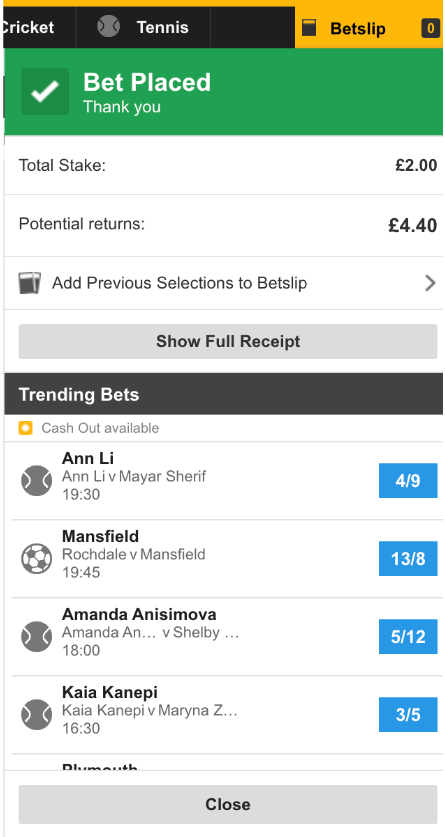The gambling industry has long embraced behavioural science. Think of the ways casinos are designed to attract customers and keep them betting. You enter and immediately see eye-catching slot machines. There are flashing lights and the sound of games being won, you can feel the energy. There are no clocks or windows to help you keep track of time. Plastic gambling chips separate you from your actual money. It’s easy to lose a chip, or place a big bet with them.
Those are the casinos. But what about gambling websites? And can the same effort and behavioural science expertise be put into protecting the customer?
BIT’s Gambling Policy & Research Unit (GPRU) has a mission to discover, test and scale ways to minimise gambling harm. Since our founding last year, we’ve produced reports focused on this specific mission, such as on default deposit limits, commitment devices, and more.
Now, we’re sharing one of the most important reports: a Behavioural Risk Audit of 10 of the UK’s most popular online gambling operators. We found that websites employ similar design choices as physical casinos and contain numerous features that may harm users. These are three of our nearly 30 key findings:
Download the report
Closing an account takes much longer than opening one
All of the operators we audited made it difficult to close an account. On some websites, it was hard to find information on the topic. Six out of 10 operators required us to call customer service to close our accounts and seven out of 10 had ‘immortal accounts.’ These could be very easily re-opened or couldn’t be closed at all.
Consider the impact these multiple frictions (i.e., extra hassles) can have on people who have decided to cut back on gambling. They can discourage them from following through on their choice, and keep them playing longer.
The ease of placing a bet or depositing money stood in stark contrast. Multiple operators used default deposit amounts (usually more than the minimum needed) to add funds quickly. For instance, on one operator site there was a button that enabled us to deposit £20 in a single click when the minimum required was actually £5. We know how big of an impact defaults can have on spending behaviour. Take our work on default deposit limits, for example. Excessive default deposit amounts like the one we encountered could easily result in higher spend.
Where are the receipts for fund deposits?
When you buy something or make a donation online, you’re emailed a receipt for your records. In emails from all audited gambling operators, we didn’t receive any receipts when we deposited money into accounts. Instead, 80% of operator emails contained urgent offers and direct marketing driving users to return to the website.
Receipts help consumers to keep track of their spending, spot if a mistake has been made on a transaction, and provide a meaningful basis on which to raise a dispute with a company if things go wrong. Not providing receipts leaves consumers at a disadvantage. When it comes to spending behaviours, and in gambling particularly, we know that people are overly optimistic about how much they win – the majority of people think they win more (or lose less) than they actually do. Easily accessible deposit receipts or, preferably, activity statements could support people to more closely manage their spending.
Download the report
No prompts for time and money spent during gameplay
Mirroring the lack of natural light or clocks in physical casinos, gambling websites encourage people to lose track of time and continue playing. During gameplay, half of the operators we audited didn’t show a user’s net position or time spent online. However, all but one showed prompts encouraging people to keep gambling after they had already placed a bet or played a game.

Image 1: Captured from Betfair website
Reminders and prompts can be powerful nudges to encourage (or discourage) behaviour. In our audit, we saw no prompts asking people to take breaks. This is critical in an online gambling environment, where people can experience ‘hot’ states (i.e., when one’s mental state is influenced by strong emotions) and make emotionally-driven decisions, which compromise their ability to stay within their intended limits.
Even if a customer isn’t in a ‘hot’ state, it’s tough to keep track of how much time and money they’ve spent without a visible indicator. Without this, people may be inclined to continue playing, underestimating their losses and the amount of time they’ve already been online.
How we designed the behavioural audit
These are just a few of many important findings from our Behavioural Risk Audit – a methodology for identifying design features that may harm people by leveraging behavioural biases. We conducted the audit across 10 gambling operator websites, selected using YouGov data.
Over the course of five weeks, four researchers explored the user journey, from opening an account, playing games and betting, to withdrawing funds and closing their account, noting their experiences and observations along the way. We designed the audit to minimise subjectivity as much as possible by drawing from well-established behavioural frameworks, such as the Online Choice Architecture report (CMA), dark patterns taxonomies and sludge audits.
To facilitate a strong analysis, researchers needed to provide similarly-formatted observations. We achieved this by developing a strict protocol for them to fill in their qualitative data in a detailed and carefully curated observation framework.
Before conducting the actual audit, we piloted the observation framework. Each researcher audited a single operator website independently, then we came together to compare responses, troubleshoot issues, and edit the framework to ensure it gave everyone the tools and instructions to submit their data consistently.
Download the report
What’s next?
The goal of the GPRU is to reduce gambling harm. Clearly, much can be done to make progress on this objective, especially on behalf of consumers. This behavioural audit was one step toward this larger goal—and it revealed many actionable insights for the industry to remedy and test what works.
Over the coming months we will hold deliberative workshops to discuss our findings and develop recommendations with key stakeholders such as those with lived experience of gambling, industry participants, and policymakers.
Read our policy report this autumn. Building on insights from this audit and upcoming workshops, we’re developing a report of policy recommendations for the gambling industry. Look out for it this autumn!
Make behavioural audits the norm in research. Behavioural audits hold great potential for many other industries, not just gambling. In fact, we’re working on creating a standard audit template, and encourage others to use this approach regularly to screen and research user journeys across sectors.
Have comments or questions? We’re proud of our team’s work developing and implementing this Behavioural Risk Audit, and we want to do even better next time. Your feedback will help us. Is there anything you think we missed? Is there anything you disagree with? Let us know here.







